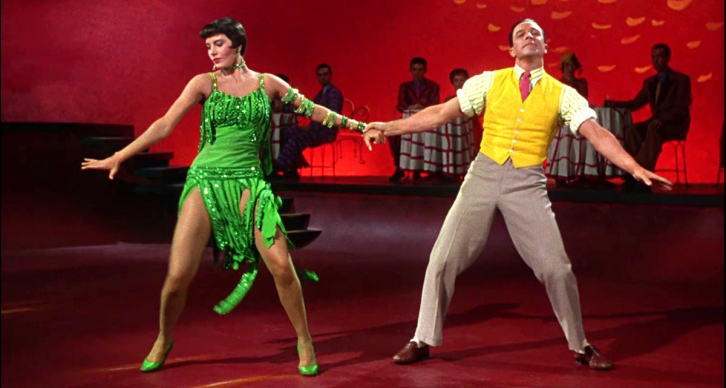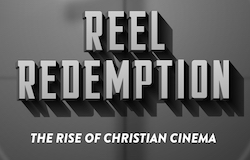The Return of the Movie Palace, by Tober Corrigan
26 May
Streaming services, VOD releases, the “Golden Age of Television” and the like have all put movie exhibition in the same existential quandary faced with the advent of sound and color: how to put butts in seats? While everything from serving food and alcohol to installing indoor jungle gyms (!?) have been attempted to solve this problem, my new personal favorite requires going back in time rather than propelling forward. I’m talking about the phenomenon often referred to as Symphony at the Movies, a special form of film exhibition that is becoming more and popular across the country each year. Watching Stanley Donen and Gene Kelly’s Singin’ in the Rain in the theater is its own glorious thing; having its soundtrack performed by a major symphony orchestra while watching it proves quite another. Like Citizen Kane or Casablanca, the film requires no more new perspectives. Popular and critical culture have together provided a gluttony of prisms by which to view it. Instead, I humbly offer up the merits of experiencing an antiquated art (going to the symphony) combined with an art inevitably heading that way (going to the movies).
While Singin’ in the Rain suffers none of the ills of its contemporaries, namely feeling formally or culturally dated, there is something even more alive and elemental in feeling the ripples of the brass as it plays out the iconic ‘Dream of You’ theme than in just hearing it over the original soundtrack. This is true for the rest of the film, whether in propulsive bombast during the ridiculously proficient Donald O’Connor comedy numbers or in swelling lament during the softer, tenderer moments. The contrasts, the sudden starts, the ever-hummable “I’m singin’ in the rain!” all get amplified by the presence and power of real musicians playing in step with the preserved performances. Watching a live symphony accompaniment of a movie is the aural equivalent to what many felt after putting on the 3d glasses in James Cameron’s Avatar. The emotions of the music reach out, fill the space, make the viewer reckon with it in a way the two dimensional sounds from speakers can never quite replicate. Like something right out of Soviet film theory, I felt the juxtaposition of the gorgeous visuals and the full, resonant orchestra create a third image in my mind’s eye, or in this case, mind’s ear. In my early years as a cinephile, it was the spectacle of the picture that drew me to movies. The bigger the screen and wider the vistas, the better. And yet, with experience and matured taste, I found myself weighing more and more greatly the aesthetic impact of sound in cinema. At this point in my movie watching career, I’d rather see a movie on a tiny laptop with surround sound than on a large projection and tinny laptop speakers. While the visual of a film is still its primary characteristic, the music builds on that establishment in a way only understood and expressible to itself.
In the end though, there is little merit in pitting visual and aural against each other when talking about films; the joy of the viewing is in their successful marriage. This is another reason that the symphony performance of Singin’ in the Rain, or I imagine of any other film, increases that film’s value. It is a double performance: that of the cast and crew of the original film and the “cast and crew” of the symphony. There is suspense in watching performers follow in real time the fixed time choreography, having to match every step touch and dramatic flourish or risk ineptitude and the ever-awkward loss of synchronization. Not unlike a night of Cirque du Soleil, one watches expecting something to go wrong at any moment, only to revel in every moment that it doesn’t. Symphony at the Movies could be called film exhibition in its purest state. Come for the movie, but stay for the chills, thrills, and an all-around good ol’ time at the movies!
It is true that the music, even if performed live, is still in subservience to the film at large. Nevertheless, taking a movie out the context of the local AMC and into the context of the symphony hall is half the magic. Once entering the hall, in my case the exquisite Powell Hall in St. Louis, a certain decorum and veneration takes over the place. For example, the virtuosity displayed is always rewarded with long, earnest applause, while in regular movie houses, applause often feels hollow, unearned, or indicative of a sold-out matinee for a Pixar movie. The hoots and hollers at the symphony are still loud but always respectful as the audience celebrates the talents and abilities of the both the living performers and the stars of long ago. There is a way in which the symphony playing with the film could be seen as the symphony playing for the film, an offering of sorts. It is also a testament to the staying power of film as a medium, its ability to inspire others to resuscitate its power before new generations of audiences. I saw several smiling boy and girls who I’m sure had never seen either this movie or one like it before. That alone is something worth much applause.
The piece of art that holds the whole experience together is the symphony hall itself. The majestic heights, the ornate sculptures, the spiraling staircases transport its tenants with a sense of what it must have felt like to see movies in that bygone era: the era of the movie palace. The 1980s brought with it the indoor shopping mall and the multiplex, both death knells for the large, gorgeous movie houses of the early 20th century. The chance for most people to see a movie like they were seen in the medium’s adolescence is sparing and often only for the elite with film premiere badges hanging around their necks. While the price range of symphony at the movies doesn’t quite democratize the events, it does allow more access and exposure to classic cinema and classical music for people without cinema rep houses in their city or town. The thrill of seeing so many generations and types of people coming together for this event gave me feelings as intangible and inexpressible as the music played that night. While being from an older time doesn’t make the experience of seeing a movie in a large auditorium any more true than another, it does fit a general ethos of film appreciation that any cinephile could appreciate or want to support.




No comments yet